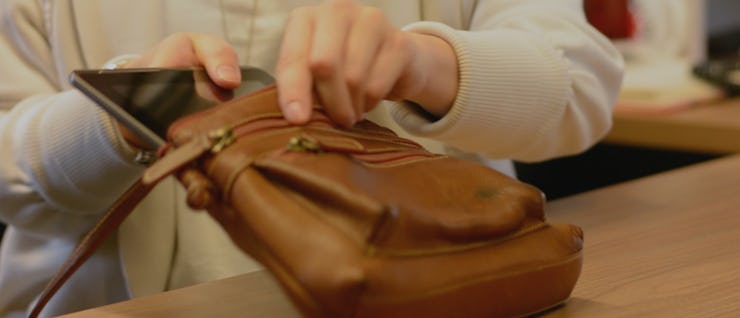A Bendable iPad Is Closer Than You Think
Spill-proof, too.

Researchers at the University of British Columbia have designed a new kind of flexible pad that can register touch from a finger even while it’s being bent. Actually, even while it’s being stretched, a capability that previous models have chased to little effect.
Malleable tech is increasingly in demand. As tech becomes thinner and more wearable, we want its surfaces to be more adaptable. Curving touchpads that can follow the contours of our hands or wrists; materials that can withstand being dropped or scrunched or doused in hot coffee.
To create the touchpad, the team turned to a new technique using “ionic skin” — a clear, stretchable form of sensory sheet created from ionic conductors; specifically, hydrogel electrodes that were subsequently embedded in silicone to form the pad. The research was published Wednesday in the journal Science Advances.
The key is that the electrodes project their own electric field above the pad’s sensor, so when they sense an additional electrode — like a finger — they can couple with it. Because the silicone is so saturated with those electrodes, the sensor’s efficacy is untroubled by whatever manhandling we inevitably visit upon our personal tech.
Check out the researchers demonstrating the effects of a coffee spill:
From here, we could adapt the touchpad to sensors that detect pressure. It’s already transparent, and can already detect more than one finger at the same time (like when you zoom in or out from a touchscreen). Basically, it’s an excellent candidate for a new generation of bendable, stretchable, coffee-withstanding tablet devices. That moldable, shatter-proof iPad we lament not being here yet could really be on its way.
One of the first barriers to scaling up any cool new piece of technology to a form in which it can transcend the lab and actually be of use to consumers is cost. But on top of being cheap to manufacture, the ionic skin we would use to make these kinds of tablets costs roughly $1 per yard. For context, that’s about the same as this extremely fetching flannel I found online at Jo-Ann Fabric.
It’s conceivably cheap enough that we could literally carpet our floors with it, which may prove useful for collecting and transmitting data in the event of an accident. Basically, in addition to the futuristic iPad of your dreams, this touchpad could one day be elevated to a tactile interface sophisticated enough to provide feedback when applied to our steering wheels, doors, furniture — even our own skin.